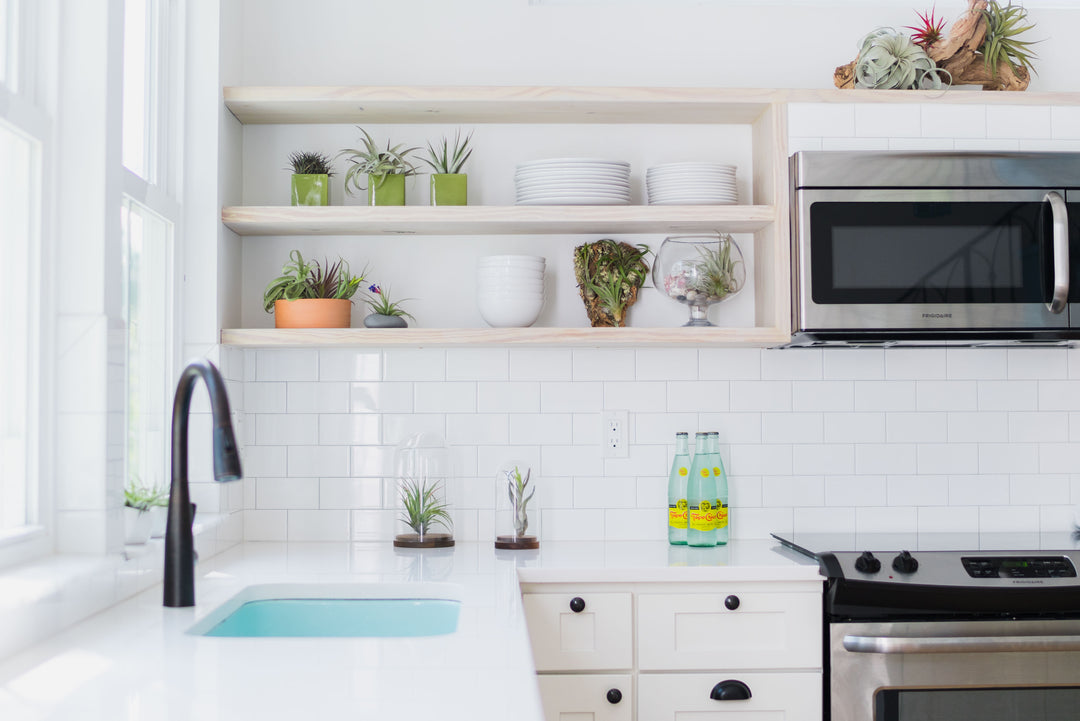
Air Plant Myths: The Truth Revealed!
When it comes to Tillandsia, or “air plants”, we come across a slew of common misconceptions regarding the plants’ physical characteristics, life cycle, and care techniques. Different resources often provide conflicting information leaving air plant owners overwhelmed with confusion. Whether you are a new or experienced tilly enthusiast, here you will find the truth behind these air plant myths!

Myth #1 - Air plants live off of the air alone and no water is required to keep them alive.
While air plants are low-maintenance, they do need some tending to! Air plants acquire water and nutrients through their leaves and in the wild, they absorb nutrient-rich rainwater and morning dew while receiving ample sunlight. To best care for your indoor air plants, give them a thorough soak once a week, and be sure to provide them with plenty of bright, indirect light and air circulation. Learn more about how to water your air plants here.
Myth #2 - Air plants are great for dimly lit or windowless rooms as they don’t need much light.
The simplicity of the air plants often leads us to assume this is accurate. On the contrary, however, air plants thrive in bright, indirect natural light or bright full-spectrum artificial light for several hours a day. Plants left in darker areas of your home will gradually decline and eventually die.

Myth #3 - Since air plants have roots, they must be planted in soil or another form of substrate.
Possibly the most unique and convenient characteristic of air plants is that they don't require any soil or to be planted at all – read our more in-depth blog Why Air Plants Don't Need Soil. Tillandsia do grow roots but they are used solely to anchor them to other plants or their surroundings and not to absorb water or nutrients. We trim the roots off of most of our air plants to keep a neat and clean appearance. This feature of not needing soil to grow and survive allows air plants to be very versatile in how they are displayed. The plants can simply sit alone atop a surface or placed in a vessel or terrarium with a base of your choice. Check out our 5 Ways to Display Air Plants blog for design inspiration!
Myth #4 - Air plants are short-lived and will die after blooming.
Air plants have an interesting life cycle. They grow, mature, and then bloom at the beginning of their reproductive cycle. Yes, the blooms are temporary and most air plants only bloom once in their lifetime (treasure these moments!), but after their blooming cycles, they will produce new growths or “pups” that will eventually evolve into full-grown plants! The original “mother” plant will often produce several pups before eventually dying off. Each can be removed to grow and live on its own or they can remain intact to form an air plant cluster. If properly cared for, your air plant will essentially live indefinitely due to this pupping process. For more information about the air plant blooming and pupping processes, check out these blogs – Air Plant Blooming Process & Starting an Air Plant Family with Pups

Myth #5 - An air plant with a brown base has died of root rot.
This is reasonably a common concern as rotting plants usually do turn black or brown at the base as they decline and eventually die or fall apart. Several species of Tillandsia, however, will naturally have brown bases so this coloring does not always indicate a health issue! A good way to test your air plant is to gently pinch the base and lightly wiggle the center leaves to be sure they are firmly attached. If the base feels squishy and the leaves easily fall out then the plant has indeed rotted. Popular Tillandsia species that will normally have healthy but brown bases include Capitata, Velutina, Xerographica, Streptophylla, Bulbosa, Juncea, and Melanocrater. The textures of these plants will vary so it is best not to judge the health of a species by comparing it to a different type of air plant! Capitata and Velutina, for example, have soft, velvety leaves and bases while Juncea and Melanocrater naturally have drier and more brittle textures. As long as the bases are firm and the leaves are intact, the plants are still viable!
To learn more about Tillandsia, be sure to read through our blogs about Air Plant Care, Designing with Air Plants, and general Air Plant Knowledge and Shopping Guides.














Leave a comment